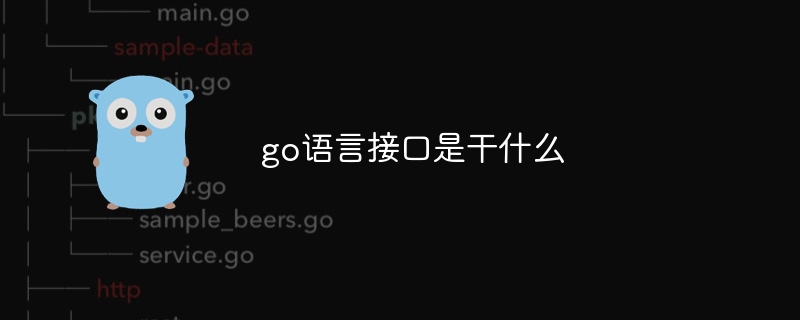Home >Backend Development >Golang >What is the go language interface for?
What is the go language interface for?
- DDDOriginal
- 2023-12-11 15:02:06855browse
Go language interfaces provide a flexible way to define the behavior of objects and use these objects without caring about the specific implementation. Usually used for: 1. Abstract data type, which can define an abstract data type, which can be implemented by different concrete types; 2. Dependency injection, which can separate the implementation of an object from its use; 3. Test, which can write tests Code to implement one or more interfaces to test the behavior of other objects; 4. Combination, you can define an object to implement multiple interfaces, or use one object to meet the needs of multiple interfaces.

# Operating system for this tutorial: Windows 10 system, Dell G3 computer.
Go language interface (Interface) is a type that defines the signature of a set of methods, but does not implement these methods. Interfaces provide a way to use a set of related methods without caring about the specific implementation.
Interfaces are used to define the behavior of objects in the Go language. An object is considered to implement an interface as long as it implements all methods defined in the interface. This allows interfaces to be used to achieve polymorphism, that is, different objects can be used to implement the same interface in the program, so that the same code can be used to operate these objects.
Interfaces are usually used in the following aspects in Go language:
Abstract data type: The interface can define an abstract data type, which can be represented by different Concrete type implementation. This means that you can use variables of interface type to store objects of different concrete types, as long as these objects implement the methods defined in the interface.
Dependency injection: In object-oriented programming, dependency injection is a common pattern. Interfaces allow you to separate an object's implementation from its use. This means that you can dynamically replace an object's concrete implementation at runtime without modifying the code that uses the object.
Testing: Interfaces make testing easier. You can write test code to implement one or more interfaces, and then use these test objects to test the behavior of other objects. In this way, the test code does not need to care about specific implementation details, but only needs to focus on the behavior of the interface.
Composition: Interfaces make the combination of objects more flexible. You can define an object to implement multiple interfaces, or use an object to meet the needs of multiple interfaces. This way, you can use different objects to combine the behavior you need.
In general, the Go language interface is a powerful tool that provides a flexible way to define the behavior of an object without caring about the specific implementation. Use these objects below. This makes interfaces widely used in abstraction, dependency injection, testing and composition in the Go language.
The above is the detailed content of What is the go language interface for?. For more information, please follow other related articles on the PHP Chinese website!

